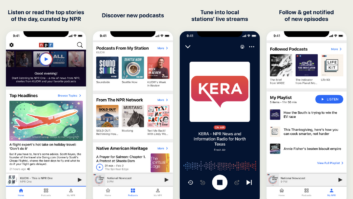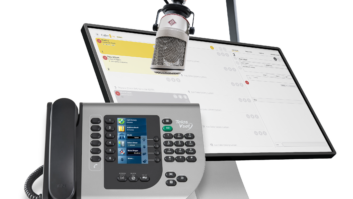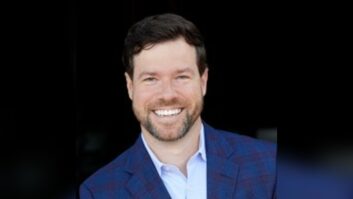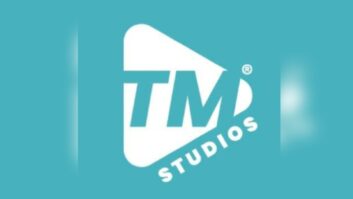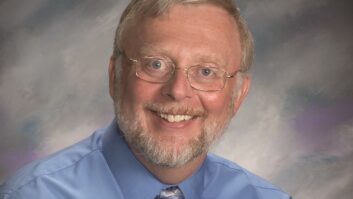You couldn�t find five more uniquely different stations than Hubbard Radio�s two AMs and three FMs. Hubbard Radio�s new studios in Phoenix, Ariz., bring together some unlikely characters. Just a few blocks from the new, built-to-suit facility on 52nd Street is a former Motorola plant that once made transistors. Also close by in another direction is Camelback Mountain, which is, as its name suggests, shaped like a camel, though a kneeling one in this case.

And inside the 23,000 square-foot facility you couldn�t find five more different stations than Hubbard Radio�s two AM and three FMs.
On the FM side, it�s cool and easy alternative 93.3 KDKB, hard-hitting 98 KUPD and classic rocker KSLX 100.7. On the AM side, it�s NBC sports affiliate KDUS 1060 and oldies KAZG 1440.
Each station is a unique brand, and each is accustomed to running its own show. That worked fine when they were scattered throughout the Valley of the Sun in three separate locations. Bringing all the stations together was a drastic change for all.
My compnay radio DNA is broadcast enginering service company based in Minneapolis. My job as the system integrator on the project was to bring them under one roof, and my planning started in June of 2015 with a visit to the recently built-out Hubbard facility in St. Louis, where I was able to formulate ideas. That started a series of weekly meetings used to narrow down the studio design and finalize the equipment order.
We started the project with just a rough layout given to us of the two-story facility. After meeting with Hubbard corporate engineers, local programmers and Trip Reeb, the market manager, an equipment list was made. The list included WideOrbit automation, Wheatstone LX-24 control surfaces for the main studios, L-8 control surfaces for the dub rooms, L-12 control surfaces for the production rooms, TS-4 talent stations and WheatNet-IP audio networking through-out.
STUDIOS
There are 12 studios for the five stations, each with a main control room and a dub and production studio off to the side. The ratings leader KUPD has a large air staff, and for it we built a larger studio with six on-air positions. The AM studios required a different configuration with two control rooms and one shared talk studio. The best views of Camelback Mountain are from the KDKB and KSLK studios. All the studios, while standardized on the same equipment, are very much different in personality and how they are used.
The furniture was designed by Studio Technology, and as usual, they delivered a great product. Also, Fender�s R&D offices are just a few miles away in Scottsdale, Ariz., and Trip Reed has been able to score an impressive collection of Stratocasters and amps that are found in the lobby and elsewhere.
A new video studio complete with green room is in the process of being added and will network into the facility for all video production, which is becoming a bigger deal at Hubbard Radio with the growing importance of social media.
The studios all look familiar on the surface; however, beneath the surface of each is a whole different set of operating parameters. We spent a lot of time watching how talent used the boards and then configured the LX-24s to match. Each talent, each studio and each show has changeable presets for their specific needs. Any jock can punch up his or her profile settings and feel right at home. In all control rooms we used the SS8 OLED button panels for various ease of use and added functionality. This controlled our 25-Seven delay units, station routing and monitor selection. We were able to use the OLED displays to put up station logos and other visual aids, another very powerful tool each studio has.
The studios include between two and six mic positions using my favorite EV RE20 mic, situated at TS-4 talent stations, which are countertop IP turrets that have cough button, a few source select buttons, and level adjustment. This was a small, easy alternative to separate announcer booths, which would have cost time and money to design and would have occupied more real estate than was available.
USB ports on studio talent stations wire directly back to Wheatstone M4-IP mic processors. At my request, Wheatstone added USB connectivity to the TS-4 cases so studio guests would be able to plug in their laptops and other devices. Wheatstone built a case with a USB jack at each talent station that is wired back to an M4-IP four-channel mic processor through a USB port � something I discussed with the engineers while at the Wheatstone factory during system staging. The USB ports are a really cool addition that Wheatstone now offers standard with the M4-IP mic processor, and represent a good example of the relationship and teamwork between the station, the factory, and radioDNA.

In the studios we wanted to give the users unlimited access to get audio in and out of the systems, so we installed a multi-port interface that had XLR male and female, RCA, 1/4-inch and 1/8-inch jacks with routable audio to each port at any level needed. This is great for news crews, bands, special guests and so on. This idea came from Hubbard�s corporate engineer Dave Garner and is something I plan to use again.
We paid special attention to sight lines in the studios (as some of Hubbard�s shows are now streamed online) by recessing speakers into the ceiling and using some interesting on-air lights. All cabling was neatly packed into cabinetry on wheels that can be pulled out, with automatic lighting that shines on cabling, D rings and power distribution for easy maintenance � making life easier for the engineering staff.
SIGNALING
All parties involved agreed to keep the facility all digital. All system I/Os are AES digital or WheatNet-IP drivers. When connecting signaling through Wheatstone�s WheatNet-IP AoIP system, all I/O available anywhere in building is accessible with perfect sound quality. This is true for logic too and allows for simple wiring.
Hubbard built out similar studios in Minneapolis, and although each market is free to choose the networking and studio gear of their preference, Hubbard Radio in Phoenix chose the Wheatstone systems because of the manufacturer�s ability to integrate well with other systems, like WideOrbit. The convenience of AoIP and reliability of WheatNet-IP were also key factors.
To implement the studio from the ground up, we designed the networking, then had the Wheatstone factory stage the full system comprising 84 I/O BLADEs, 30 TS-4 talent stations, five LX-24, three L-12 and four L-8 consoles, a four-stack core switch and 12 studio edge switches. I was able to visit the system along with the Hubbard corporate engineers for some valuable pre-configuration time. I had signal names, rack elevations and IP addresses ready for system input while there. Another thing we did to make setup more plug-and-play was to have all mic poles shipped to our facility in Minneapolis, where they were assembled and wired.
We also pre-made countertop cabling: We drilled holes in the cabinets, dropped in the cables and terminated them where needed. Because of this prep work we were able to ship a system that was as �plug-and-play� as possible. Once on-site, we unboxed, racked up, plugged in and powered up. Shortly thereafter, audio was available in all studios.
Even with all the prep, our staff of four field engineers was onsite in Phoenix installing the system for the better part of five months, ensuring a smooth launch and handover. The IT for Hubbard Radio is handled locally by Marcus Meng, who put in a tremendous effort and worked under the direction of John Spaulding, who played a key role in making all systems communicate. The radioDNA team put in 12-hour days for five months straight as the norm. DNA team members are: Bryan Goldberg, Amber Stone, Adam VanConant and Rhea Tolck.
Built-in equipment rack lighting is a major plus.RACK ROOMS

A year of planning started with the proposed signal flow in and out of studios and through the rack room. I started by determining the number of drops into the rack room based on the number of I/O BLADEs and stations and tallied up the equipment needed, which then gave me the number of racks and a good idea of signal flow and wire management.
The rack room has 18 racks in total. Each station has two racks, with signals propagating from the top to the bottom of the racks. I like to make things logical so that in the event of an emergency, the station engineer can find a solution to their problem easily. For each station, key components are laid out exactly the same. We color code different network functions and light up all the racks for easy service. Again, making these standards across the facility allows for easy and well thought-out maintenance and troubleshooting.
In total, WheatNet-IP required six rack tie drops from each station�s rack to the core switch rack. We also have dedicated drops in these racks for WideOrbit automation, the house network and a video system. Patch panels are located in the back of each rack and it�s easy to see the neatly dressed wire paths and the color code scheme.
Four Cisco Stackwise 3750s were installed as the core network switch and each studio has its own Cisco edge switch with POE; this simplifies connections for the TS-4 and TS-22 talent stations. I would highly recommend this. We also installed a Cisco Mini virtualized server platform for the WideOrbit automation, partitioned for each of the five stations. The WideOrbit machines are located in the climate controlled rack room and are extended into the studios by way of Adderlink.
In the racks, we installed automatic lighting, something I like to do with all facilities. The color coding of the cabling isn�t much good if you can�t see it. In fact, wherever there are racks or cabling of any kind, I like to include automatic lighting so that it�s one less thing to worry about when doing maintenance and repairs. Our firm�s color code standard is orange for WheatNet-IP connections, green for automation connections, yellow for video extenders, blue for house network, white for IP phones and black for BLADE I/O.
Documentation is a key feature and I put a lot of effort into it. A map of the entire WheatNet-IP system is both printed and kept digitally; documentation also includes a signal flow block diagram for each station showing the full signal chain from studio to transmitter, along with an explanation of how each salvo works for switching studios or going into automation mode.
With Dave Adkins starting his new duties as chief engineer near the end of the project, it was important to turn over complete instructions that would help Adkins and the IT staff easily understand the system.
Rackroom gear is cooled directly at the source.CHILLIN� IN PHOENIX

Obviously, we needed a way to keep the equipment and the rack room cool in one of the hottest spots in the United States. Initially, we had planned to install corner fans that could circulate exhaust, but we quickly realized that we needed to place cooling near the gear instead. We met with the company APC to talk about their unique rack cooling solution.
This is the first broadcast facility that I know of using this efficient cooling system. We placed a chiller between every fourth rack and it is a part of the racks� exhaust plenum space. All equipment exhaust is cycled in the chillers. It is then cooled, sent back to the rack, and the cycle is repeated. Each rack has a temperature monitor that looks at the input air and as the temperature rises, the system then forces out more chilled air.
The result is great; putting the cooling right where it�s needed and capturing the exhaust ensures that very little equipment heat ever enters the room. After looking at many different vendors� solutions to rack room cooling, we found this to be the most effective and efficient, and perfect for the Phoenix heat.
Custom Wheatstone Screenbuilder touchscreen.SCREENBUILDER

Three ISDN codecs, a Tieline Merlin and four Comrex Access rack mount codecs are installed in a rack behind a glass door in the hall that we named �Public Rack.� I mounted a touchscreen monitor to this rack as an easy means to steer remote traffic to each codec when needed. I worked with Wheatstone�s Kelly Parker to design an easy interface using the WheatNet-IP ScreenBuilder app, giving staff an accessible, simple interface to change routing without having to go through a crosspoint matrix.
The ScreenBuilder app has faders, meters, labels, buttons, clocks, timers and other widgets that are tied to network elements and can be arranged on a PC screen to create custom control panels and quick-access buttons for level adjusting, monitoring and talkback controls. After working with ScreenBuilder and seeing what it can do, we plan to use this for other applications such as remote consoles and virtual studios. It�s proving to be a very powerful and cost effective tool for us.
INTEGRATION OF AUTOMATION AND ROUTING
Automation and routing are two of the most important aspects of the technical plant in the Hubbard Phoenix stations. The two need to be tightly integrated, which we did by incorporating WheatNet-IP�s Automation Control Interface into the WideOrbit automation so that talent could trigger salvos and commands from the automation system and vice versa.
Working with Chris Fonte from WideOrbit we were able to fully integrate audio routing and logic control between both systems. It was a perfect marriage, and both systems play well together. This level of integration simplifies the user experience, letting talent focus on content rather than the technical operation of the studio.
Use of WheatNet-IP�s audio routing and built-in utility mixers allowed us to make studios �hot� when needed for air, and to bypass them when needed for production or voice tracking. Studio availability is sometimes tight, and we can now increase the number of studios from which production can be done. Through the utility mixers and routing functions we are also able to create special WideOrbit-only mixes for automation purposes. Talent can send regular programming out to air as usual, but at the same time, use the same studio for production.
The BLADE-3�s built-in gain control, EQ and other audio processing features were used to create pre-air feeds for talent wanting processed air checks. In the past, I cannibalized old audio processors, removing the pre-emphasis, in order to do the same thing. Now with audio processing as part of the WheatNet-IP BLADE, all I had to do was route compression, limiting and EQ to mics and for headphones and speakers.
We use Glass E for onsite and remote administration � a very useful tool in managing a site like this. We have also set up a machine for offsite access by the radioDNA team, allowing us to connect remotely and make any changes the users may need.
Rob Goldberg is the founder and CEO of radioDNA.






